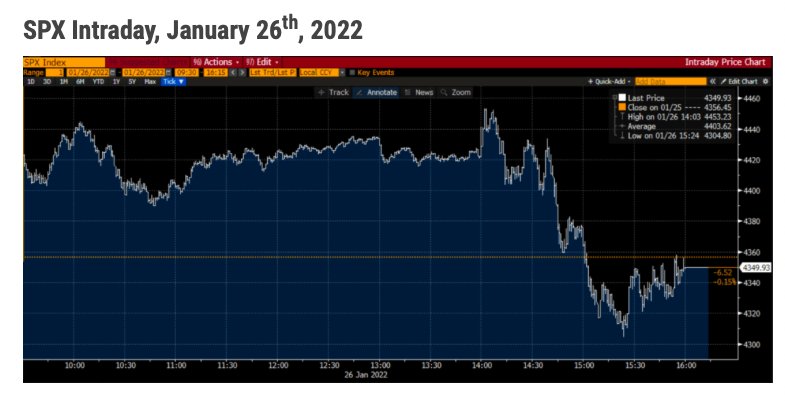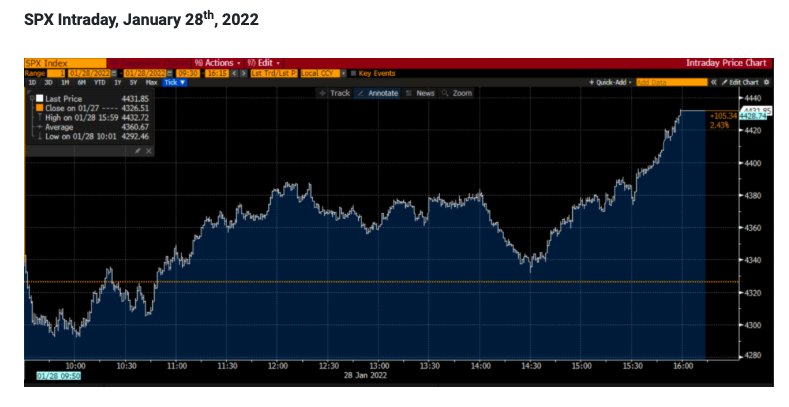By Steve Sosnick, Chief Strategist at Interactive Brokers
Uncertain times breed volatility. Quite simply, volatility is how the markets express investors’ inability to reach a consensus on value. Think of it this way: if all investments were perfectly discounting their future prospects and supply and demand were in perfect equilibrium, we wouldn’t expect to see any price movement. There would be no need, because everyone agrees on what would be the correct price of each investment.
We all recognize the impossibility of that scenario, but we should recognize that market movements are the process of price discovery. When there is greater consensus about asset prices, those prices move less. When there is uncertainty about how to value assets and cash flows, we see more movement in prices as markets seek that consensus. There tends to be more consensus about the path of asset prices in bullish markets rather than bearish markets, which is why markets that trend higher tend to be less volatile than those that are experiencing corrections.
Earlier, we noted how most of the market’s largest one-day gains in history occurred during bearish periods. We attributed this phenomenon to a combination of fear of missing out (FOMO) and hope, and acknowledged that it is human nature for people to want to see a light at the end of a tunnel. Investors are inherently optimistic – they wouldn’t be investing in risky assets if they weren’t confident that those investments would offer a reasonable rate of return – so it is understandable why many would seize upon buying opportunities even in bleak times.
Deeper Meaning
The key for investors is to recognize that volatility is a mathematical construct, not a value judgment. Yet, as noted above, we often see more volatility – or at least fear it more – during uncertain markets.
This is why I have long contended that while the CBOE Volatility Index (VIX) is not expressly the market’s fear gauge, it frequently can and does indeed act like one. Thinking back to the inherent optimism of investors, it is natural to see downward moves as being unnatural and thus something of concern. That concern can be reflected in higher implied volatility, which is what VIX actually measures.
Consider these two graphs below. They are one-day snapshots of movements about two weeks ago. When you examine them, think about which is the “better” or “worse” day, and which is more volatile:


Price Gyrations
On the 26th, the S&P 500 Index (SPX) opened over one percent higher and traded around those levels for most of the day before giving back their gains in the last two hours. On the 28th, SPX opened lower, recovered, and then shot higher in the last two hours of the day. The 26th was a disappointment right, while the 28th could be considered a turning point for the market. I would assert that both were part of a medium-term bottoming process, one that has not yet been fully resolved.
At the time, the 26th was considered a volatile day and a failure. We did indeed have a trading range of just over 2%, even though we only closed modestly lower. That is indeed a volatile day, though close-to-close historical volatility measures would show little change.
On the 28th however, markets closed almost 2.5% higher, which was perceived as a solid “up” day and a sign of strength for the market. But by any measure – intraday or historical volatility – the 28th was the more volatile day. It wasn’t concerning because the market did what it’s supposed to do.
Takeaway
This is what my friend Steve Sears terms “socially acceptable volatility”. Investors really only mind volatility when it moves prices lower, not higher. In both cases, the market is trying to reassess fair values for a wide range of asset prices, yet it’s perceived much better when the market makes a favorable reassessment.
Socially acceptable or not, volatility is something to be reckoned with. Long investors don’t often feel the need to hedge when prices are moving the way they want or expect them to. It is important to remember that all volatility represents uncertainty, and it is important not to become complacent simply because that volatility is helping your positions, not hurting them.
This post first appeared on February 8 on the Traders’ Insight blog.
Photo Credit: zooey via Flickr Creative Commons
DISCLOSURE: INTERACTIVE BROKERS
The analysis in this material is provided for information only and is not and should not be construed as an offer to sell or the solicitation of an offer to buy any security. To the extent that this material discusses general market activity, industry or sector trends or other broad-based economic or political conditions, it should not be construed as research or investment advice. To the extent that it includes references to specific securities, commodities, currencies, or other instruments, those references do not constitute a recommendation by IBKR to buy, sell or hold such investments. This material does not and is not intended to take into account the particular financial conditions, investment objectives or requirements of individual customers. Before acting on this material, you should consider whether it is suitable for your particular circumstances and, as necessary, seek professional advice.
The Standard and Poor’s 500, or simply the S&P 500, is a stock market index tracking the performance of 500 large companies listed on stock exchanges in the United States.VIX is the ticker symbol and the popular name for the Chicago Board Options Exchange’s CBOE Volatility Index, a popular measure of the stock market’s expectation of volatility based on S&P 500 index options. Investors can’t invest directly in indexes.
The views and opinions expressed herein are those of the author and do not necessarily reflect the views of Interactive Brokers LLC, its affiliates, or its employees.
Any trading symbols displayed are for illustrative purposes only and are not intended to portray recommendations.
In accordance with EU regulation: The statements in this document shall not be considered as an objective or independent explanation of the matters. Please note that this document (a) has not been prepared in accordance with legal requirements designed to promote the independence of investment research, and (b) is not subject to any prohibition on dealing ahead of the dissemination or publication of investment research.


